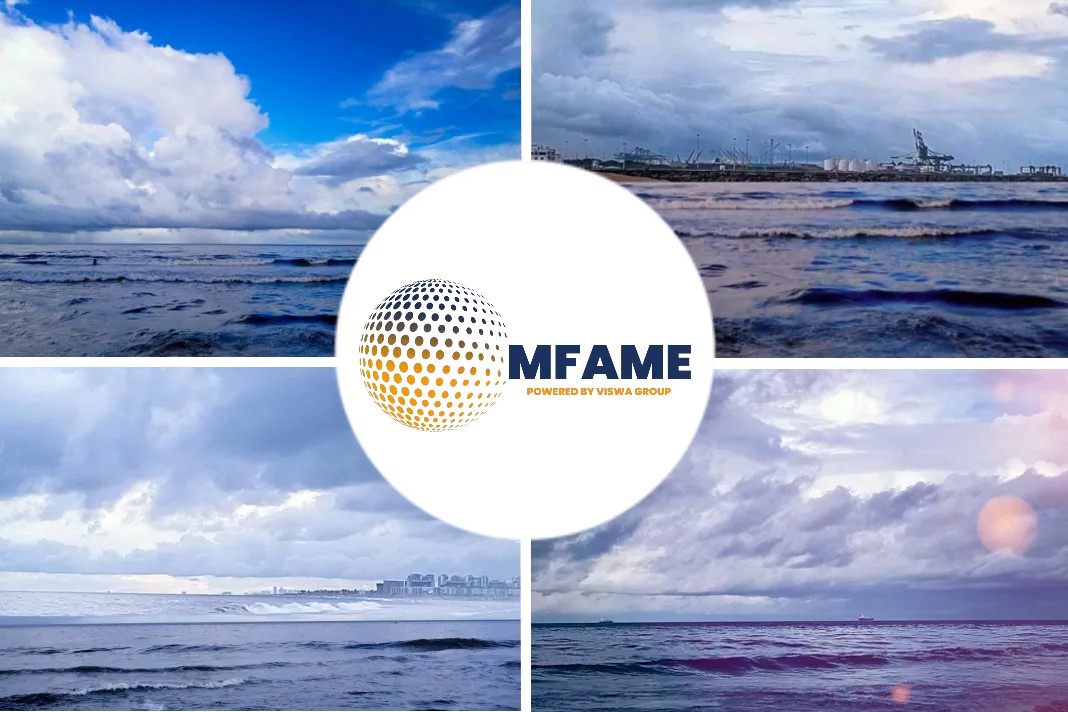- Carbon dioxide emissions per tonne mile is now the metric against which shipping’s progress is being gauged.
- THE fourth industrial revolution will be faster, infinitely more complicated and expensive than anything that has gone before.
- A failure to adapt and grasp the nettle of decarbonisation is the surest guarantee of obsolescence.
Carbon dioxide emissions per tonne mile is now the metric against which shipping’s progress is being gauged. A failure to adapt and grasp the nettle of decarbonisation is the surest guarantee of obsolescence, says an article published on Lloyd list website.
Fourth industrial revolution
THE fourth industrial revolution will be faster, infinitely more complicated and expensive than anything that has gone before.
Also known as the fourth propulsion revolution as the next generation of fuels become the latest in a line stretching back to sail, this challenge requires us all to embrace the new language of shipping — which is CO2 emissions per tonne mile.
Reaching the decarbonisation target for 2050 is a challenge where we can only see the outline of a solution. While 2030 may be within operational reach, 2050 will require a solution played out across the entire value chain.
The real future fuel will be a mixture of leadership and co-operation
This is a “we” game, where success is a team sport. As the American Bureau of Shipping highlighted in our third low-carbon shipping outlook, our industry cannot reach the decarbonisation targets alone.
We will need to work together — governments, ports, shipowners, shipyards, charterers, original equipment manufacturers and class. We must pool our resources, experience and knowledge if we are to achieve our sustainability ambitions.
Carbon dioxide reduction will require a short-game, mid-game and long-game approach. It will also require a hybrid solution, consisting of four levers:
- Alternate fuels
- Greater uses of technology, such as energy-efficiency devices and next-generation hull resistance
- Performance optimisation in terms of speed optimisation and just-in-time shipping using data and digitalisation
- Policy, such as market measures
New landscape is emerging
Decarbonisation of our industry also represents a strategic opportunity, a structural realignment of historic proportions, where the entire ecosystem and value chain is torn down and built anew.
In support of the net-zero carbon economy, a completely new landscape is emerging.
Demand for carbon-neutral fuels or zero-carbon fuels will rapidly grow and supply will follow.
The hydrogen and carbon value chains will grow in tandem, driving development of technology and regulation.
Renewable energy sources such as wind and solar will have to scale up to meet the demand for green hydrogen, which will form the feedstock for either carbon-neutral, carbon-based fuels such as synthetic methanol and synthetic methane, or zero carbon fuels such as ammonia.
The hydrogen value chain will have to develop with it, as distribution and transportation will have to grow with production to meet the demand. This means technologies in terms of storage and handling, networks and port facilities will also have to mature to support this value chain.
The development of liquefied natural gas as marine fuel serves as a guide here. We can learn a lot from its journey, since all future fuels will have to undergo a similar process.
Keep an eye on the “wild cards”
We should also keep an eye on the “wild cards” in shipping’s decarbonisation deck. We are looking into carbon capture and exploring how this could be a solution on board ships.
Furthermore, although neglected for years, the nuclear sector seems to present some new ideas that could potentially revolutionise ship propulsion
Carbon capture
The demand for carbon-neutral operations and carbon-neutral fuels creates a new carbon value chain. Carbon capture appears to be key in developing this, as carbon is captured to reduce production emissions and to produce blue hydrogen, which in turn can be used to produce other blue fuels such as blue ammonia.
Transportation of the captured carbon to a sequestration point will grow to respond to increased capture activity. While sequestration will become key, we have also identified the importance of direct air capture in the production of synthetic carbon-neutral fuels.
The carbon value chain could grow even further if the captured carbon is used as a source for other products beyond fuels. Central to this would be CO2 carriers with new designs that could provide flexibility in operations and ABS is involved in several projects.
Finally, we are exploring with our partners, the feasibility of capturing and storing CO2 on board as a means of reducing the carbon intensity of operations.
Safety must continue to be the common denominator
Aside from technology maturity considerations, these solutions introduce complexity into the design of vessels and operations that the industry is defining and optimising. In all of this, port facilities and infrastructure will be an integral part.
Both value chains require standardisation, verification and certification to support their development, as well as the necessary policies to provide both framework and incentives.
Governments have to put shipping at the forefront as shipping will be the cornerstone on which all related supply chains will be built. Shipping will be the vehicle for the transition.
On this journey, safety must continue to be the common denominator in all that we do, with the safety and scalability of decarbonisation technologies functioning as boundary conditions.
We must also continue to guard against the unintended safety consequences that will inevitably be born out of the rush for lower carbon operations.
A failure to adapt and grasp the nettle of decarbonisation is the surest guarantee of obsolescence. Such is the scale of the disruption that, already today, it is not enough to have a decarbonisation strategy for your business. Rather, decarbonisation is increasingly likely to be your best business strategy.
Did you subscribe to our daily newsletter?
It’s Free! Click here to Subscribe!
Source: Lloyd list
























